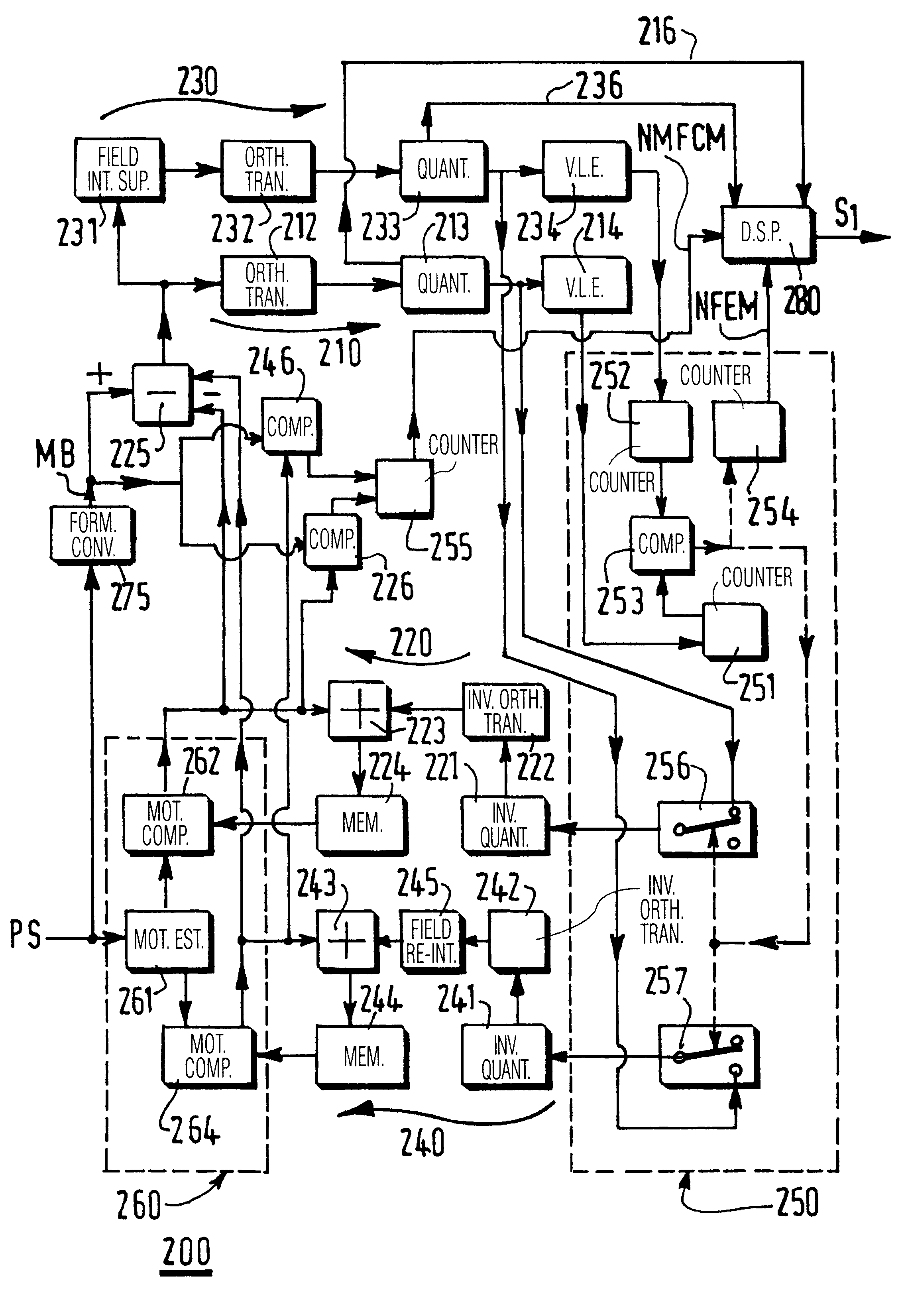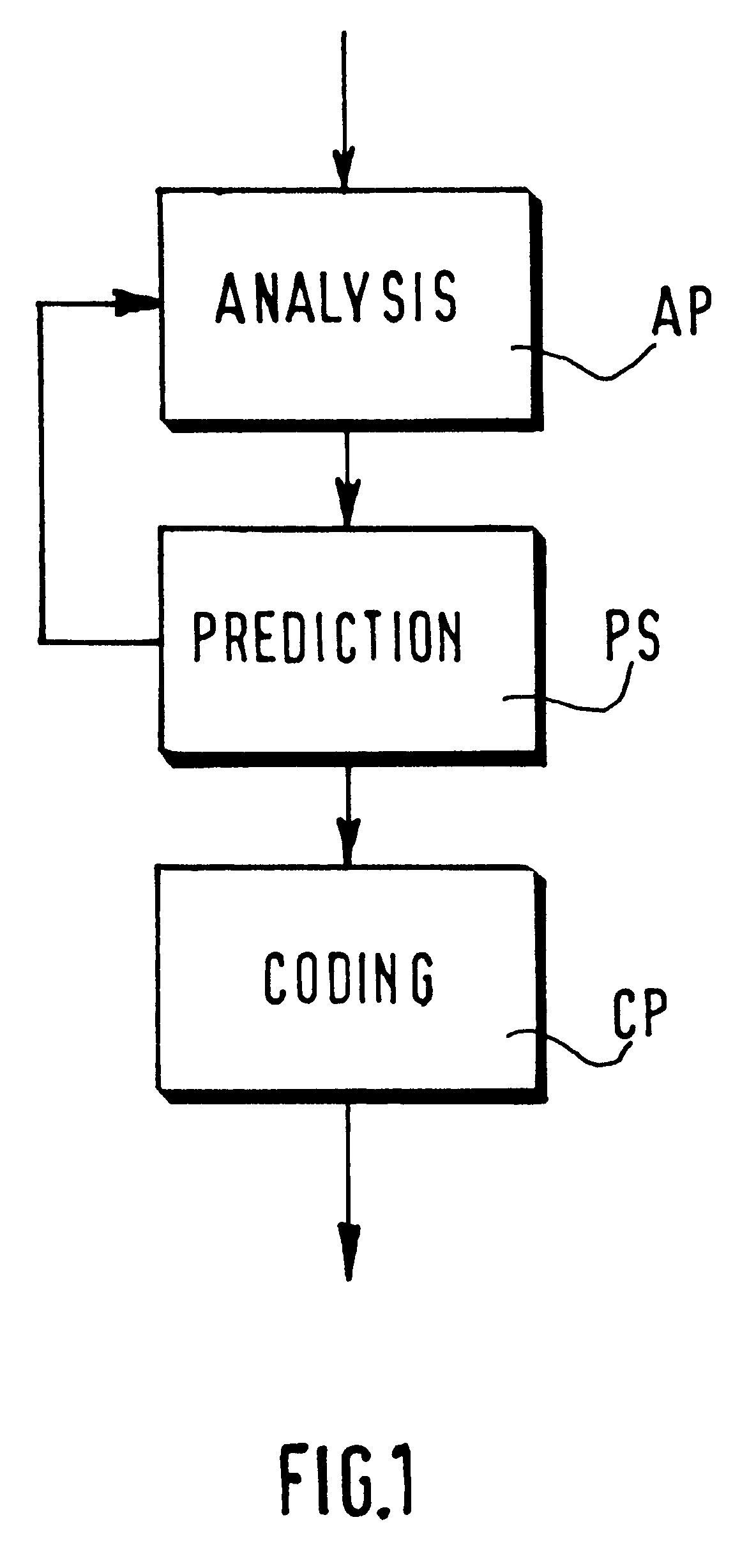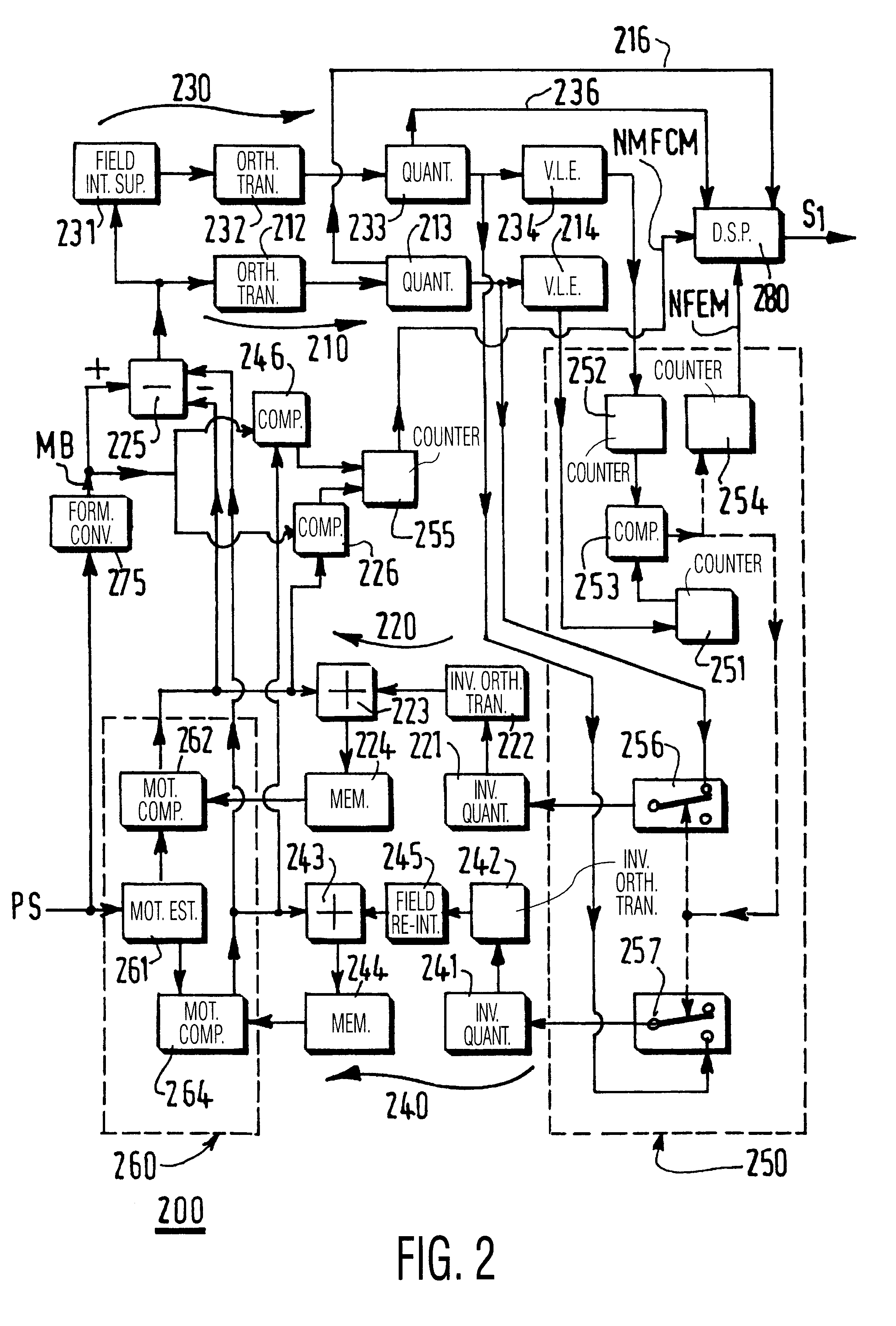Video coding method and corresponding video coder
a video and sequence technology, applied in the field of video coding methods and corresponding video coders, can solve the problems of impairment of display image quality and compression efficiency, and none of these two solutions is optimal, and achieve the effect of improving compression efficiency and coheren
- Summary
- Abstract
- Description
- Claims
- Application Information
AI Technical Summary
Benefits of technology
Problems solved by technology
Method used
Image
Examples
Embodiment Construction
With a conventional coder, sequences that are rather still are generally well encoded. This is no longer the case when trying to code more difficult sequences with a lot of motion, flashes, sequences with a lot of scene changes, and so on. According to the video coding method here proposed, if a constant quantization step is used to encode a picture, it becomes possible to determine if some part of this picture is more difficult to encode, or not. A first coding pass is therefore carried out with such a constant quantization step, and its result is a list of statistics related to existing coding modes. The main ones, in the present case, are: NFEM=number of field encoded macroblocks NFMCM=number of field motion compensated macroblocks AQSCP=average quantization step of the current P picture AQSLP=average quantization step of the last P picture.
After having studied several relevant picture sequences coded in the field mode and in the frame mode, it is here proposed to take the decisi...
PUM
 Login to View More
Login to View More Abstract
Description
Claims
Application Information
 Login to View More
Login to View More - R&D
- Intellectual Property
- Life Sciences
- Materials
- Tech Scout
- Unparalleled Data Quality
- Higher Quality Content
- 60% Fewer Hallucinations
Browse by: Latest US Patents, China's latest patents, Technical Efficacy Thesaurus, Application Domain, Technology Topic, Popular Technical Reports.
© 2025 PatSnap. All rights reserved.Legal|Privacy policy|Modern Slavery Act Transparency Statement|Sitemap|About US| Contact US: help@patsnap.com



